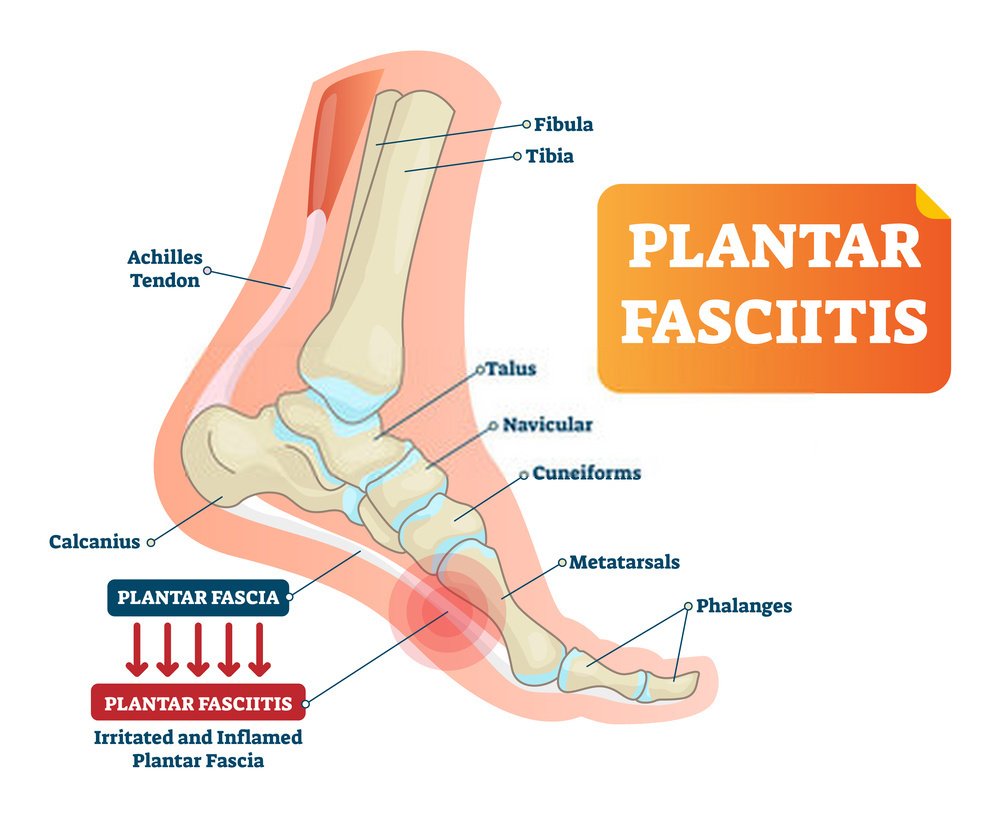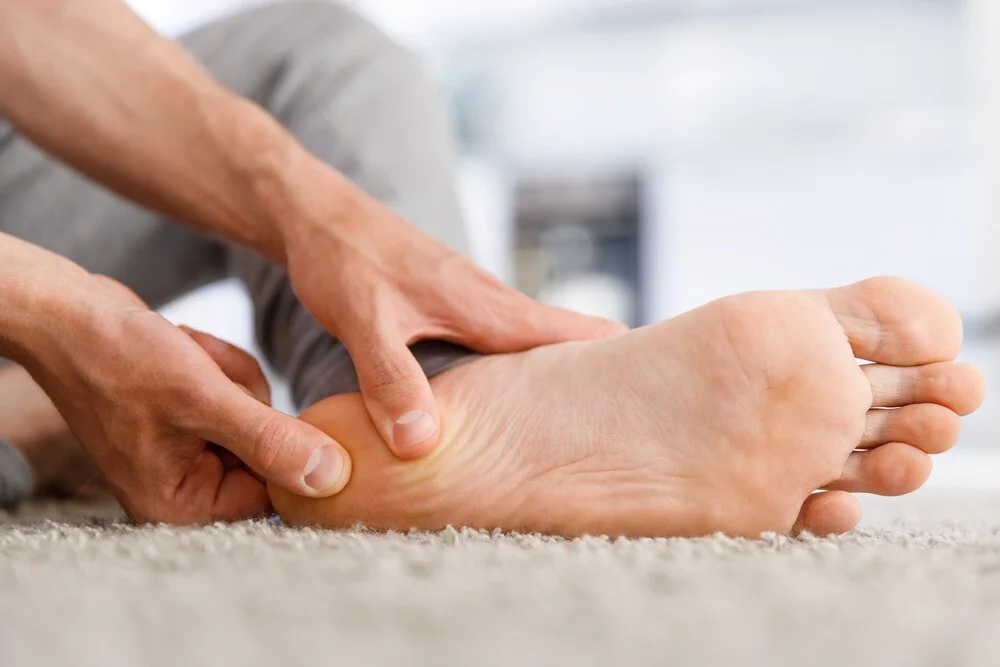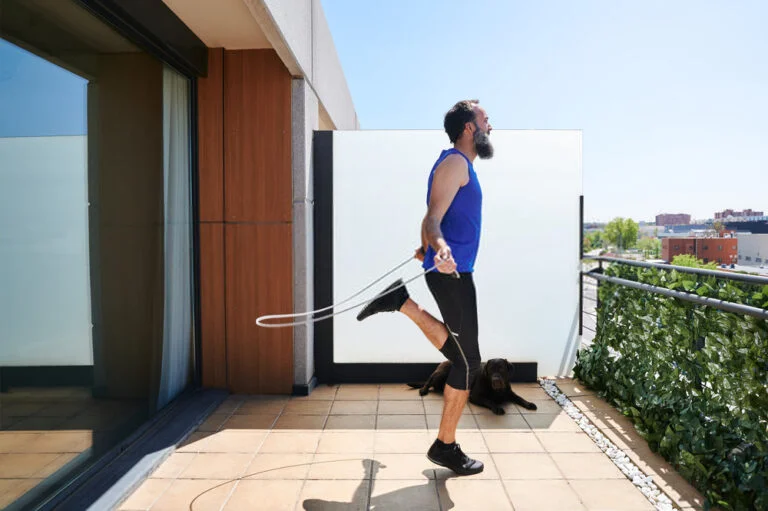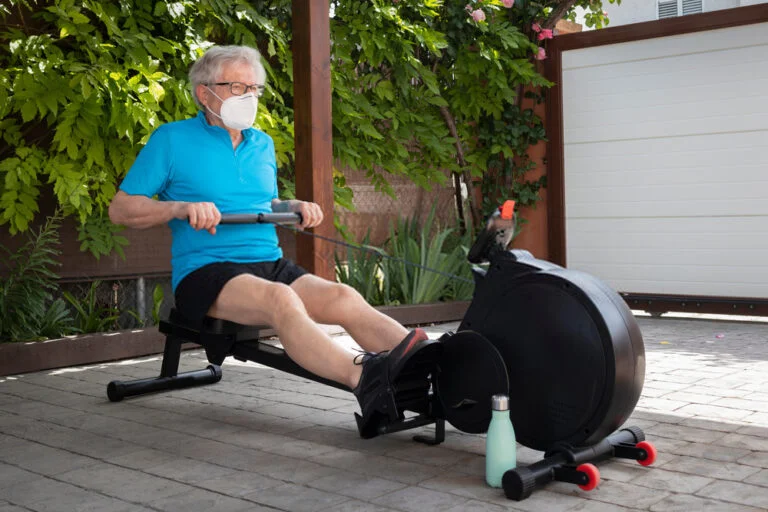Can Jumping Rope Cause Plantar Fasciitis?
Many people incorporate jumping rope into their fitness routine. Jumping is an effective way to burn calories and get the heart rate normal.
However, some people have claimed that doing so can lead to plantar fasciitis or a similar foot’s connective tissue injury.

There are many myths about plantar fasciitis, which this article will debunk!
To understand why this myth is incorrect, let’s look at the specifics first.
What is plantar fasciitis?
The term “plantar fasciitis” refers to heel pain when tendons and ligaments in the foot become inflamed.
The inflammation of the arch and foot occurs when the connective tissue can not keep up with the demands of increased physical activity.
Plantar fasciitis is caused by tendons becoming inflamed, causing pain in the heel. These symptoms include swelling, soreness, redness, or a hard-to-shake feeling in the heel area.

It is common in runners but can also be found in individuals undergoing a rapid increase in physical activity.
What causes plantar fasciitis?
Several factors cause plantar fasciitis, but one of the most common causes is an increase in physical activity.
It is due to the body being unable to strengthen its connective tissue at a fast enough rate.
People with flat feet are more at risk here since they have less arch support to press the tissue.
The pain can become so strong that it hinders a person’s ability to move normally. Many unsupportive footwear choices also cause plantar fasciitis, so it comes as no surprise that tight-fitting shoes and high heels are often to blame!
What are the symptoms of plantar fasciitis?
The symptoms of plantar fasciitis are challenging to spot in some cases. The area on your heel that feels sore may hurt only when you put weight on it.
Many people with this condition will complain of pain at night and swelling.
However, if you scrutinize the bottom of your foot, you might notice a red, hard-to-find area that’s hard to pop.
This could indicate a case of severe plantar fasciitis.
Who gets plantar fasciitis?
The most common people to get plantar fasciitis are those who have recently increased their physical activity, like runners who start to run longer miles after a period of inactivity.
However, plantar fasciitis can also occur in individuals with arthritis and those with a rapid increase in activity or weight gain.
Shooters will also find themselves vulnerable if they change from barefoot running to basketball shoes without gradually progressing into more supportive footwear such as running shoes or hiking boots.
Can jumping rope cause plantar fasciitis?
Now that we have seen what plantar fasciitis is, let’s look at the myth that jumping rope can cause plantar fasciitis.
Jumping rope can cause plantar fasciitis if you are doing it in bad form. Most jump ropes come with instructions on how to do it properly, but these instructions are often overlooked.
To do jumping rope exercises correctly, you need to have proper form, meaning that you should jump in a straight line and land on the ball of the foot. You should also be working your legs and abs to help maintain equilibrium.
If you are overweight or injured, you should not do jumping rope while standing on one foot because it could put too much strain on the muscles and ligaments in this area.
Jumping rope may be suitable for your body, but it is not a cure-all exercise! You still need to consult a doctor if you feel pain in the heel area when jumping exercises.
Does too much jumping cause it?

The myth that jumping rope is the cause of plantar fasciitis is unfounded because jumping rope does not put that much strain on the feet. However, it is essential to remember that proper footwear and technique are vital in preventing plantar fasciitis!
To prevent plantar fasciitis, individuals need to strengthen their feet by slowly increasing activity and switching to supportive footwear choices.
If you have plantar fasciitis, avoid too much jumping (unless your doctor prescribes explicitly) and use good shoes with good added support.
Also, try the RICE method: rest, ice, compression, and elevation. Finally, visit a doctor if you have any doubts about plantar fasciitis.
Although plantar fasciitis can be caused by too much jumping, it is usually a result of incorrect footwear or training.
Stretches to help your plantar fasciitis
Plantar fasciitis symptoms are treated by stretching the plantar fascia tissue, and the best way to do this is by rolling a lacrosse ball under your feet. It allows for increased flexibility in your plantar fascia and also helps to improve flexibility overall.
A good towel stretch is ideal for stretching the muscle, and this is a simple stretch you can do anywhere. All you need is a towel, and you can either lay on the floor or position your leg on a chair.
You then need to put the towel around your foot and pull it towards you. Try pulling it towards your body until you feel the stretch in your plantar fascia.
There are numerous treatments for plantar fasciitis.
Simple stretching exercises are usually an effective treatment for plantar fasciitis, such as the towel stretch. In addition, applying ice to the foot area can help reduce inflammation.
Compression (orthotics) may be an effective treatment for plantar fasciitis.
Rest is an important part of workout and recovery. In addition, Re-strengthening the plantar fascia can improve strength in the arch and heel.
Conclusion
There is no evidence that jumping rope will suddenly lead to plantar fasciitis. On the contrary, rope jumping is a great exercise for the whole body and will tone and strengthen your lower body!
But keep in mind what we said earlier:
- Practice good technique.
- Get shoes with arch support.
- Strengthen your feet.
- Use the RICE method if you feel pain.
If you feel too much pain or have other foot problems, see a doctor! In the meantime, take a break from rope jumping until the pain subsides.
I hope you enjoyed learning about plantar fasciitis and jumping rope. If you have any questions or thoughts, please comment below!






